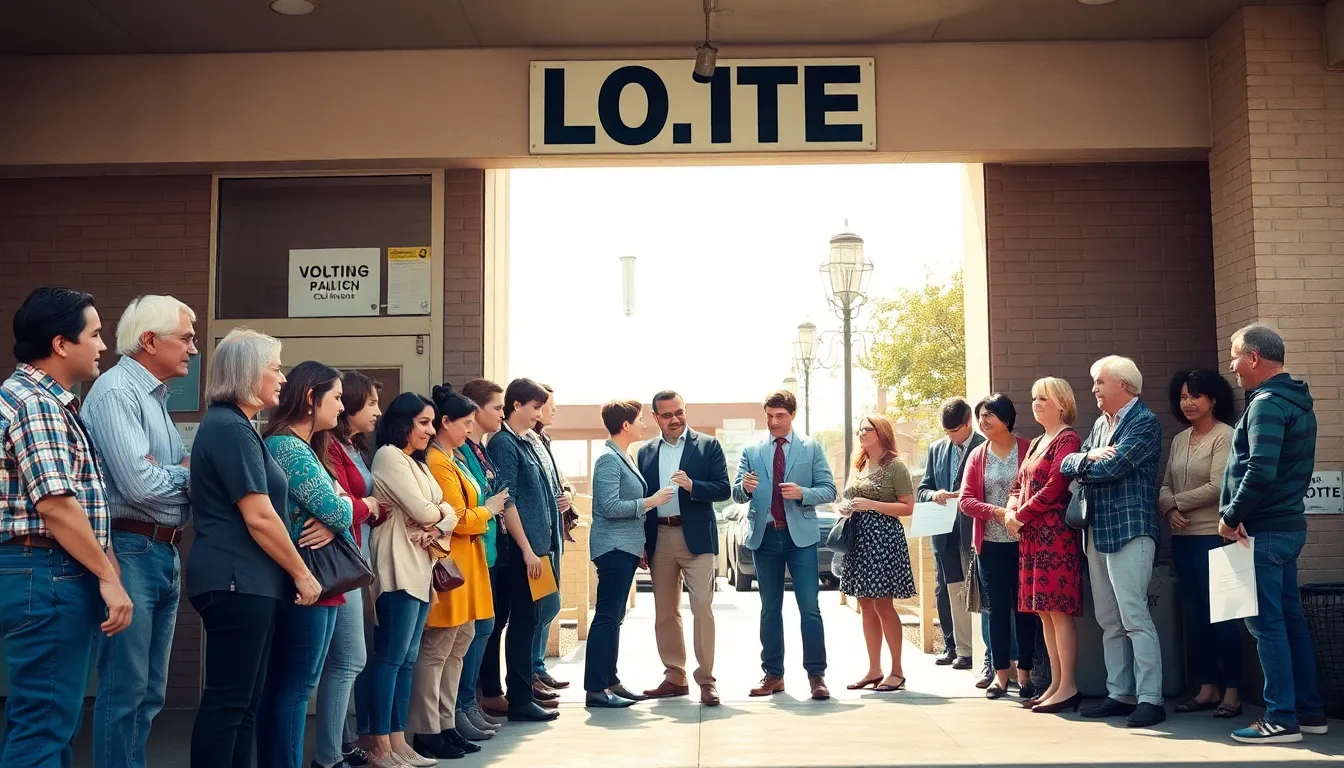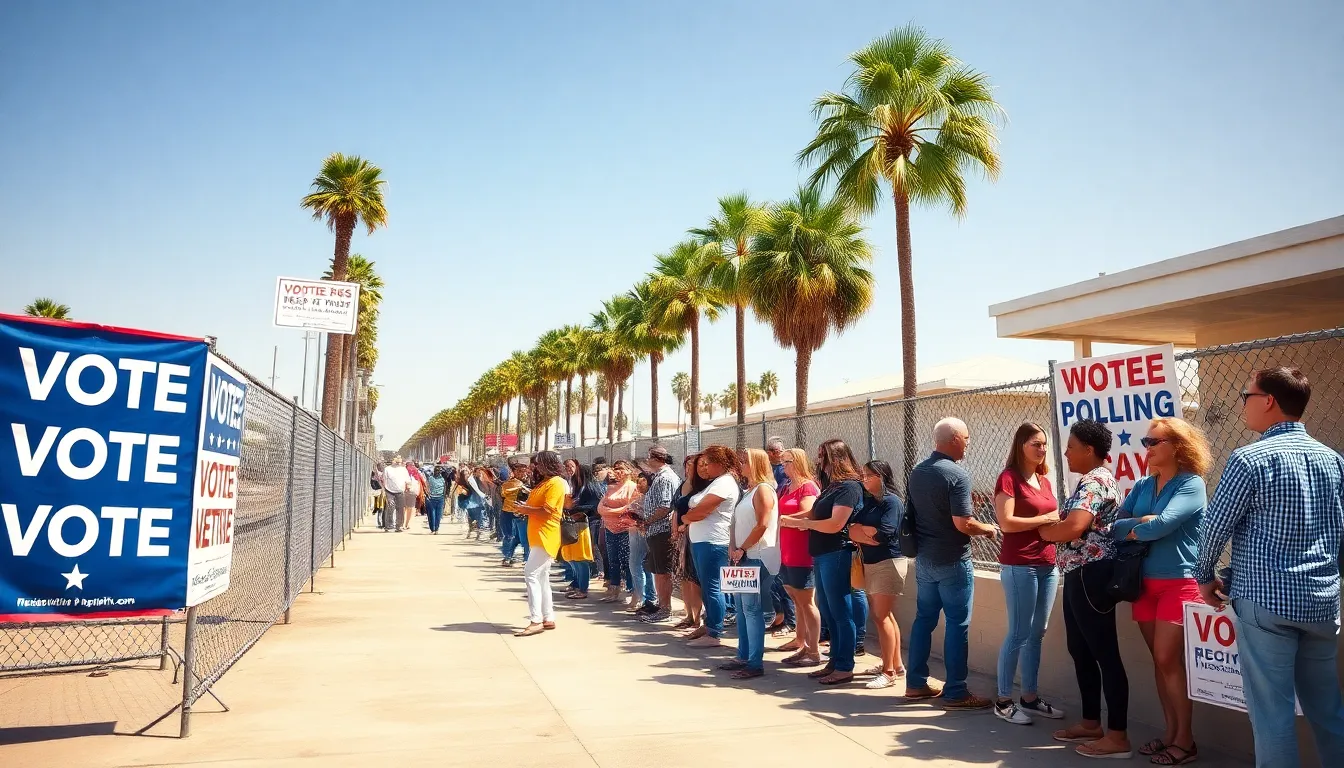Voting in California is like trying to find the best taco truck in a city full of options—exciting but a bit confusing. With its sprawling landscape and diverse communities, many wonder if they can cast their ballot anywhere they please. Picture this: you’re sipping your favorite coffee in San Francisco, but your voting precinct is in San Diego. Can you just pop in and vote?
Table of Contents
ToggleOverview Of Voting In California
Voting in California involves specific guidelines that differ from many other states. Every voter must cast their ballot at their designated polling place, which is determined by the voter’s registered address. Generally, voters should check their voter registration status before Election Day to confirm their assigned precinct.
Polling places open at 7 a.m. and close at 8 p.m. on Election Day. Voters can also utilize early voting options available in many counties. These early voting periods help reduce congestion on Election Day and provide more flexibility for those with scheduling conflicts.
Vote-by-mail ballots are available to all voters in California. Mail-in ballots can be returned either by postal service or dropped off at designated ballot drop boxes. It’s crucial to ensure that ballots are returned on time to be counted. Additionally, California allows voters to vote in person at drop-off locations starting 29 days before the election.
Accessibility is a priority in California. Polling places offer various accommodations for individuals with disabilities, ensuring everyone can participate in the voting process. Voters can request assistance as needed, making the experience more inclusive.
Once voters finish casting their ballots, they can track their status online. This tracking system provides updates on when ballots are mailed, received, and counted. Such transparency adds confidence to the voting experience, allowing voters to see the progress of their contributions.
Voting Locations In California

Voters in California must visit specific locations to cast their ballots. These locations ensure each person votes from their designated precinct based on their registered address.
Polling Places
Polling places are traditional voting locations assigned to registered voters. Each polling place opens at 7 a.m. and closes at 8 p.m. on Election Day. Voters can find their designated polling place using the California Secretary of State’s website. Assistance is available for individuals with disabilities, ensuring everyone can access these voting sites. Election officials also provide provisional ballots at these locations if questions arise about a voter’s eligibility.
Vote Centers
Vote centers offer flexibility in polling locations and accommodate voters across multiple precincts. Many counties utilize these centers to facilitate early voting and provide options for in-person voting on Election Day. Typically, they operate from 7 a.m. to 8 p.m. as well. Voters can register and cast their ballots at vote centers, making the process easier for those who may not have a designated polling place nearby. Counties work to ensure these centers are accessible, encouraging participation from all community members.
Registration Requirements
California requires voters to register to vote at least 15 days before Election Day. Individuals must be U.S. citizens, residents of California, and at least 18 years old on or before Election Day. Registration is open to those who are 16 or 17 years old, allowing them to preregister. A driver’s license number, state identification number, or the last four digits of a Social Security number is needed during the registration process.
Voters can register online through the California Secretary of State’s website, by mail using a paper application, or in-person at designated locations. Those registering online must possess a California driver’s license or ID card. Mail-in applications are accessible at various public agencies, including libraries and post offices.
Tracking registration status is essential to ensure eligibility. Voters can verify their registration online for accuracy. Changes to registration, such as name or address updates, must also comply with the 15-day deadline.
Specific groups may require additional assistance. Individuals experiencing homelessness can register using a temporary address. Resources are available for individuals with disabilities, ensuring they have equitable access to the voting process.
Understanding these requirements is crucial for participation in elections. Ensuring one meets these criteria empowers individuals to make their voices heard in the democratic process.
Voting Methods
California offers various voting methods to ensure everyone can participate in elections effectively. Both in-person and mail-in voting provide options tailored to individual needs.
In-Person Voting
In-person voting occurs at designated polling places within a voter’s precinct. Polling places open from 7 a.m. to 8 p.m. on Election Day, allowing ample time for voters to cast their ballots. Each location is equipped to assist individuals with disabilities, ensuring accessibility for all. Voters may also access provisional ballots if there are questions regarding eligibility. Utilizing the California Secretary of State’s website, individuals can easily locate their assigned polling places. Some counties allow early voting at select locations, enhancing convenience and reducing potential lines on Election Day.
Mail-In Voting
Mail-in voting, or vote-by-mail, enables voters to receive and return their ballots through the mail. California provides this option to all registered voters, ensuring broad access. Ballots must be returned by 8 p.m. on Election Day, and voters can track their ballot status online for transparency. To receive a mail-in ballot, voters can request one through their county’s election office. This method offers flexibility, allowing voters to complete their ballots at their own pace. Additionally, mail-in voting supports individuals who may face transportation or mobility challenges.
Can I Vote Anywhere In California?
Voting in California requires going to your designated polling place based on your registered address. This rule ensures that each voter casts their ballot at the correct location. Voters can find their polling place through the California Secretary of State’s website. Open from 7 a.m. to 8 p.m. on Election Day, polling places accommodate various voter needs, including those with disabilities.
Understanding Your Jurisdiction
Voters must understand their precinct jurisdiction before Election Day. Each precinct has a specific polling place, determined by the voter’s registered address. Confusion may arise if voters attempt to vote at a location outside their precinct. Every polling place is equipped to handle unique voter needs, ensuring accessibility and assistance. Finding the correct site prevents ballots from being deemed invalid, which can occur if cast at the wrong location.
Exceptions And Special Cases
Certain exceptions apply to voting locations in California. Vote centers allow flexibility for voters from multiple precincts to cast ballots. These centers provide registration and in-person voting options, enhancing accessibility. It’s crucial for voters to note that these centers might not be available in all counties. Provisional ballots also serve as a safeguard, allowing individuals uncertain of their eligibility to cast ballots while verifying their registration status.
Voting in California requires adherence to designated polling places based on registered addresses. While it may seem limiting at first glance, options like vote centers and early voting enhance accessibility. Voters can enjoy flexibility and convenience while ensuring their participation counts.
Understanding registration requirements and available voting methods empowers individuals to make informed choices. With resources in place for those with disabilities and options for mail-in voting, California strives to create an inclusive electoral process. By staying informed and engaged, voters can confidently navigate their voting experience and make their voices heard.




